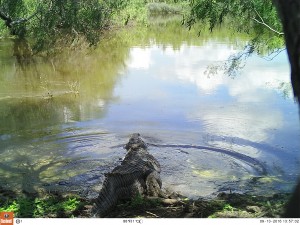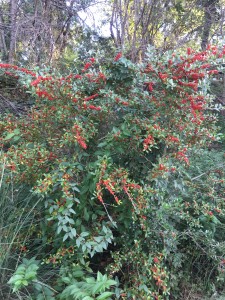More south Texas trail camera footage! This week we found several images of different pigs, lots of babies and lots of huge boars. Feral hogs are omnivious, eating both plant and animal matter and will even eat their young under extremely poor conditions. Most ranch owners dislike seeing pigs around their property because they cause destruction to habitat — rooting and trampling around watering holes can cause damage to crops, fields, and livestock feeding. They also destabilize wetland areas, so managers will often find methods of their removal.
iNaturalist Link: http://www.inaturalist.org/observations/4610966









